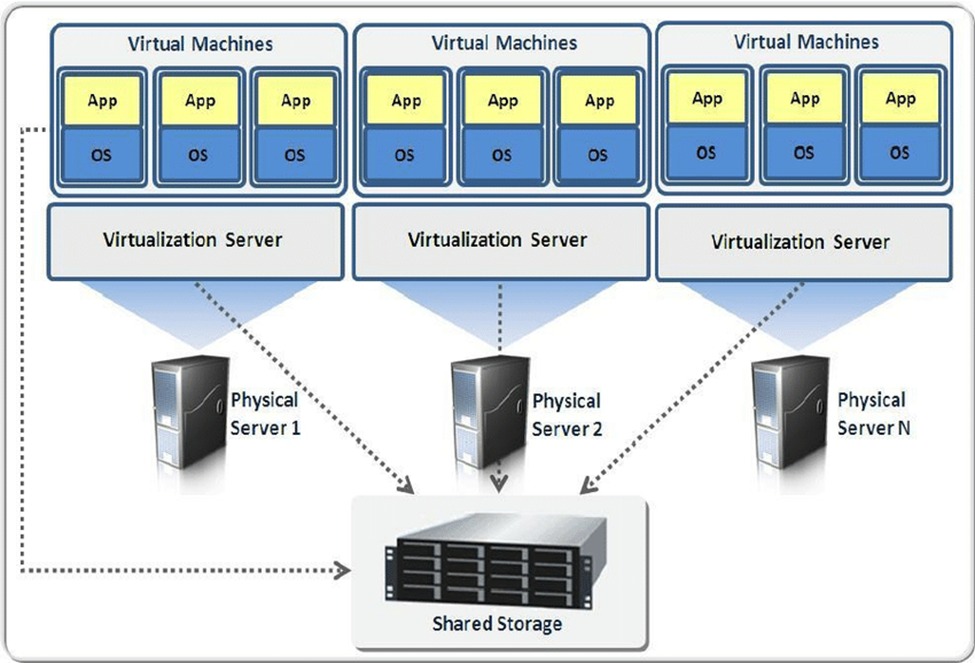Today’s systems are powerful. Powerful enough to take 5 or more physical Legacy systems and/or applications and run them from one bare metal device.
Does your company currently have a server for each individual Application?
This can be difficult to manage and support. By removing the hardware dependency on these servers, you increase manageability, reliability, and flexibility of your IT infrastructure.
Server virtualization is a process that creates and abstracts multiple virtual instances on a single server. Server virtualization also masks server resources, including the number and identity of individual physical servers, processors and operating systems.
Traditional computer hardware and software designs typically supported single applications. Often, this forced servers to each run a single workload, essentially wasting unused processors, memory capacity and other hardware resources. Server hardware counts spiraled upward as organizations deployed more applications and services across the enterprise. The corresponding costs and increasing demands on space, power, cooling and connectivity pushed data centers to their limits.
The advent of server virtualization changed all this.
Virtualization adds a layer of software, called a hypervisor, to a computer, which abstracts the underlying hardware from all the software that runs above. A hypervisor organizes and manages the computer's virtualized resources, provisioning those virtualized resources into logical instances called virtual machines (VMs), each capable of functioning as a separate and independent server. Virtualization can enable one computer to do the work of multiple computers, utilizing up to 100% of the server's available hardware to handle multiple workloads simultaneously. This reduces server counts, eases the strain on data center facilities, improves IT flexibility and lowers the cost of IT for the enterprise.

